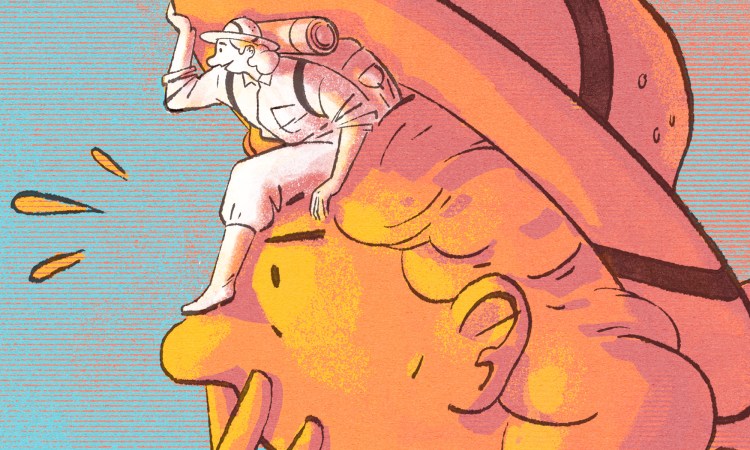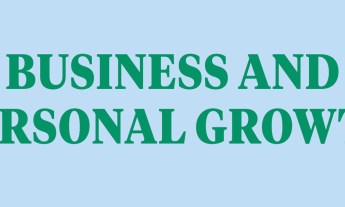
“How can I be the best ‘me’ possible?”
It’s a question you’ve probably asked yourself, at some time or another. Well, for nearly 20 years, Whitney Johnson has been exploring that question — studying writing, advising and coaching about human potential. She works with individuals, teams and organizations to help them reach their limits (in a good way!), and in her new book Smart Growth, she shares what she’s learned.
When it comes to growth, Johnson uses a model called the S Curve of Learning (first identified by social science researcher E.M. Rogers). As she writes, “A map can jumpstart a smart growth journey. The S Curve of Learning is that map.”
Whenever we set out to learn something new, we begin at the bottom of the S (see the diagram here) and then climb upward. Here, she looks specifically at the first phase of the S Curve — what she calls the Explorer phase and one that many of us find ourselves in now — and gives seven questions to help us decide if a new challenge is worth pursuing.
Perhaps you’re considering a job or role change, starting or buying a business, getting married, or becoming a parent.
Maybe you’re exploring how to volunteer in your community, how to donate to causes you care about, or how to successfully vacation.
Perhaps you want to find a religion, wallpaper a room, learn to invest, or teach your old dog new tricks.
Maybe you want to conquer the territory of self — to develop greater patience and become more focused, resilient or benevolent.
Our brain likes novelty, but when there’s too much novelty, our limbic system sounds an alarm.
Each is a voyage awaiting a captain.
Exploration is key because it helps us make good decisions despite a mind-boggling array of choices.
Most of us do not suffer from a lack of possibilities, yet overabundant options can be paralyzing and undermine or discourage action. Our prefrontal cortex — the part of the brain that juggles all the options we’re considering — doesn’t have unlimited processing power to constantly consider how one of an infinite number of new things we could do fits with what we are already doing. It usurps an enormous amount of energy to do this.
We’re also paralyzed by fear. Exploring a new S Curve of Learning is filled with the threat of uncertainty. Our brain likes novelty, but when there’s too much novelty, our limbic system — whose job it is to detect and respond to threats — sounds an alarm.
To decide if a stretch of terrain warrants further exploration, I’ve come up with a seven-point template of questions I suggest you ask. Here they are:
There is a nearly limitless range of things that are possible. They require only that we believe and act on our belief.
1. Is it achievable?
The writer Neville Goddard once said, “The drama of life is a psychological one and the whole of it is written and produced by your assumptions. Your assumption guides all of your conscious and subconscious movements so inevitably that it actually dictates events.”
Wistfully thinking “That would be nice …” often signals we don’t think a goal is possible and, therefore, it won’t be. If, instead, we are optimistic, saying, “I am so happy I’ve achieved this” as if we already have, there is a kernel of belief that it is within reach.
Often though, there is a gap to bridge.
Knowing our assumptions guide our movements, how do we change our assumptions so “that would be nice” becomes “this is nice”? While it’s true that unattainable objectives certainly exist, it’s also true that there is a nearly limitless range of things that are possible. They require only that we believe and act on our belief.
2. Is it easy to test?
Is there an easy way to test whether I want to be on a particular S Curve of Learning? If I decide to stay on this S Curve, will my initial pace be sustainable?
Find simple ways to test new S Curves of Learning. I know this sounds obvious, but I’ve found both with myself and in coaching others that once we feel inspired to do something new, we feel compelled to start really big. But when we need to make space on our cluttered mental and emotional shelves for something big, we find there’s little room. It’s discouraging.
So start small. Set your initial expectations and incremental increases so laughably small, that you deactivate your inner procrastinator.
Each tiny benchmark is its own easy test. Is this S Curve feasible? Can I sustain this long term? Take baby, baby, baby steps.
Our general human tendency is to want some new knowledge that builds on the firm foundation of what we already know.
3. Is it familiar yet novel?
You should look at S Curve opportunities in terms of both their familiarity and their novelty. You need some of both.
Familiarity helps you relax and feel safer; too much familiarity may mean stasis. The unfamiliar in small doses surprises and delights and can lead us in new directions. In large doses, novelty and uncertainty create anxiety and fear.
Academic research suggests there’s an optimal ratio of tried-and-true to the new. Brian Uzzi and Benjamin F. Jones, professors at the Kellogg School of Management, analyzed 17.9 million research articles over ten years. They found academic papers that combined about 85 to 95 percent familiar sources with 5 to 15 percent novel sources were twice as likely to be high-impact papers, as measured by citations. Their conclusion seems to concur with our general human tendency to want some new knowledge to build on the firm foundation of what we already know.
Extrapolating from their research, do you have approximately 85 percent of the know-how you need to succeed on an S Curve you are exploring? Is at least 5 to 15 percent of what you are considering novel enough to stimulate your brain to change and grow?
4. Does it fit my identity?
An S Curve worth pursuing will dovetail with who we aspire to be.
Exploring areas of ourselves and possibilities that have no apparent connection to who we are right now is exciting. They may even be admirable, but they may also mean we get voted off our current island. People around us, including those we care about deeply, may be heavily invested in who we are now: our family.
It’s less difficult to take on a new learning curve if it aligns with our current identity.
Here, again, balance is necessary. If the new S Curve we’re exploring is too aligned with who we already are, the potential for growth may be too low. But if it’s too far out of alignment, then the price of reaching for a new identity may be too high.
I’m not suggesting we automatically pass over opportunities that are significantly divergent from our current identity. But we do need to explore the cost to our meaningful relationships and our sense of self before we make the leap.
We have our stated, public-facing values. But we also have hidden or “shadow” values that don’t meet the public eye.
5. Is the reward worth the cost?
Is what I will gain sufficient to offset the tangible and emotional costs of scaling this new S Curve?
Sometimes S Curves aren’t totally voluntary. Circumstances, or people who see potential in us, give us an unexpected push.
Preplanned or unforeseen, thrilled or terrified, you’ll need to determine whether the reward of being on a specific curve is worth the cost. Even if the reward doesn’t initially seem greater than the cost, can you find a way to make the numbers add up?
6. Does it align with my values?
Ignore this question at your peril.
In the final analysis, the measurement of our life ill fall short of what we hoped if the work we are doing, the time we are investing and the things we are accomplishing don’t lead us in the direction of our deepest aspirations and our most deeply held values.
But assessing if an opportunity is aligned with our values is usually easier said than done. We are complex creatures, and our hierarchy of values isn’t always straightforward.
We have our stated, public-facing values. But we also have hidden or “shadow” values that don’t meet the public eye, and exploration involves excavating our shadow values — for example, your shadow value could be wanting personal credit because if you weren’t the best as a child, approval was withheld.
Shadow values emerge to protect us, but left unchecked they can choke our growth and the growth of those around us. They are like cancer cells and weeds — both grow, but at the expense of healthy ecosystems. It’s understandable that we want our less socially acceptable values to stay in the shadows, and yet what we avoid or run away from is almost always the richest raw material for meaningful growth.
Know what your shadow values are. Understand what aspects of your personality feed them, or perhaps what may have happened early in your life that made these shadow values powerful to you. Then bring them out of the shadows. This both honors the experiences that brought them into existence and loosens their grip.
As 20th-century novelist, poet, essayist and environmental activist Wendell Berry put it, “The world is full of places. Why is it that I am here?”
7. Is this my why?
When contemplating a new opportunity for growth, consider what motivates you — the “why” behind what you are doing. As 20th-century novelist, poet, essayist and environmental activist Wendell Berry put it, “The world is full of places. Why is it that I am here?”
Exploring my “why” helped me recognize that I wouldn’t stay in the investing business forever. It was a challenging revelation. I was good at picking stocks. I could build a decent financial model. I liked being able to say I was an investor. It made me feel important. That was my identity.
But I didn’t find myself thinking about the market when I didn’t have to; I was far more excited by investing in people. And that turned out to be my “why.” When I interact with you, I want to be invested in you — for you to have a greater sense of who you are and who you can be, not just professionally, but personally, as a human being.
If you don’t yet know your “why,” Simon Sinek provides a brilliant yet simple exercise. Ask the people who know you well why they enjoy being around you and what their relationship with you does for them. If you can get candid, straightforward answers from them, they will reveal to you your “why.”
Reprinted by permission of Harvard Business Review Press. Excerpted from Smart Growth: How to Grow Your People to Grow Your Company by Whitney Johnson. Copyright © 2022 Whitney Johnson. All rights reserved.
Watch her LinkedIn Live conversation with TED here:












